Building Globally, Impacting Locally



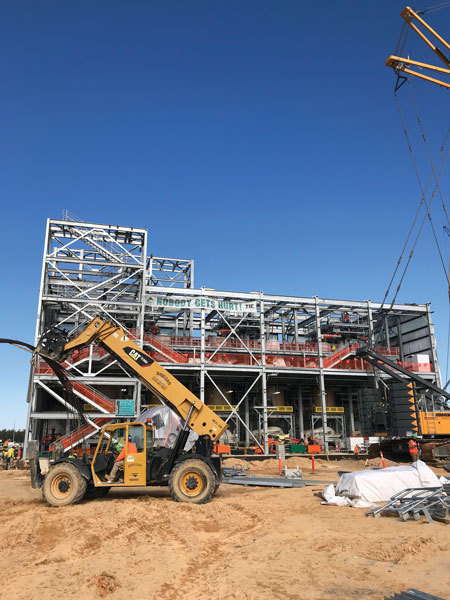
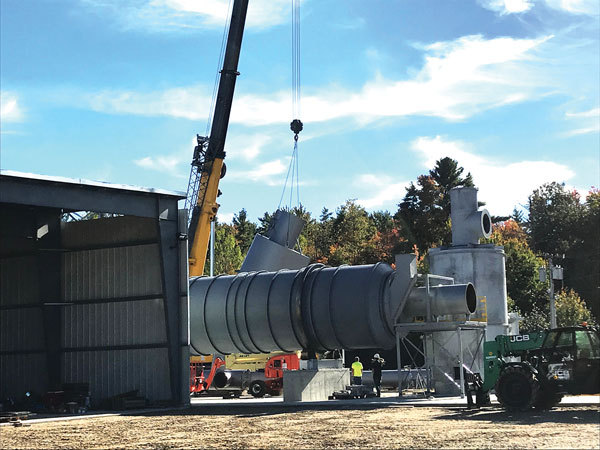
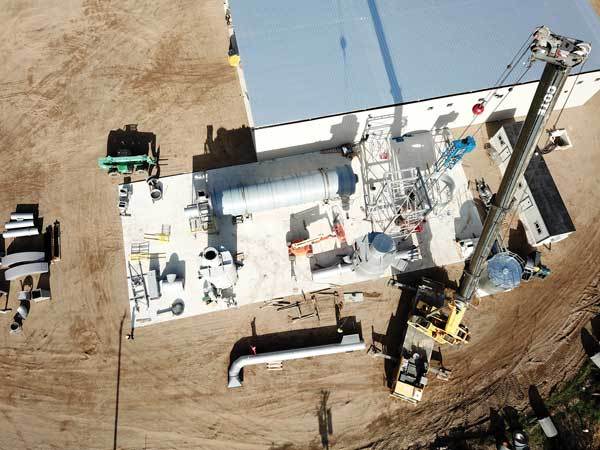
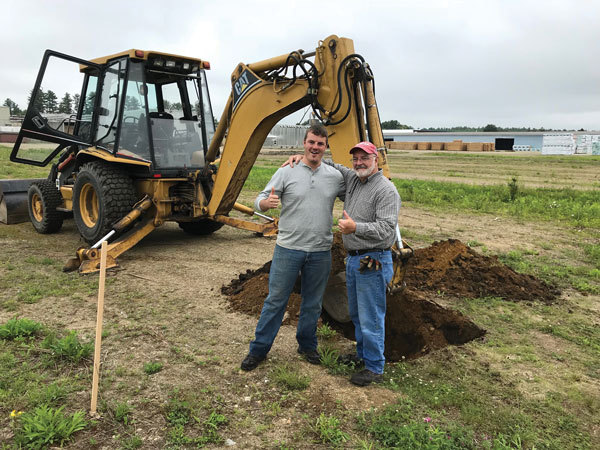








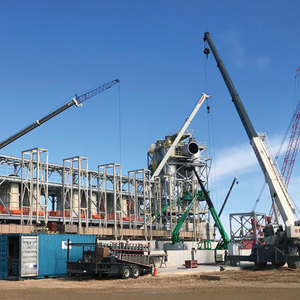
PHOTO: ENVIVA
April 23, 2019
BY Patrick C. Miller
The domestic and industrial wood pellet industries are motivated and influenced by different objectives and market factors when it comes to building or expanding, thus resulting in differing business models and practices. Ultimately, however, the end game is the same—to decrease the use of fossil fuels.
In the U.S. export market, Enviva Partners—the world’s largest utility-grade wood pellet producer—is expanding production by 1 million tons in response to an increased demand for wood pellets, particularly in Asian markets. According to Japan’s Ministry of Economy, Trade and Industry, there’s upward of 25 million tons of biomass demand on the country’s horizon. Enviva is building a new pellet production plant in Hamlet, North Carolina, and expanding facilities in Northampton County, North Carolina, and Southampton County, Virginia.
In contrast, T&D Wood Energy LLC—a family-owned business with a long involvement in forest products—recently opened a 35,000-ton capacity wood pellet plant in Sandford, Maine, to enter the home heating market in the Northeast U.S. Between the town of Sanford and the USDA providing incentives, and the nearby Pleasant River Lumber pine sawmill supplying much of the wood waste feedstock for pelletizing, the timing and opportunity were right. “We had been trying to build an industrial facility for quite a while under our F.E. Wood Natural Energy entity name,” says Tony Wood, who co-owns T&D Wood Energy with his father, Dean. “We decided that there’s no real opportunity for us to get into the industrial segment at this time. This is a new venture we put together and our first pellet manufacturing facility. The ownership of the plant has a lot of forest product experience in sawmills and pellet mills.”
Viva Enviva
Nina Mrose, Enviva’s vice president of communications and public affairs, notes that the company’s business model is to fully contract its production capacity. “Given that our existing production capacity is already sold and spoken for, as we sign these additional long-term contracts, we need to create additional capacity in order to fill those commitments,” she explains. “We have a lot of customers in Europe, but we increasingly have much more geographic diversity in our customer base. Recently, we’ve been signing more long-term contracts with Japan.”
Enviva chairman and CEO John Keppler recently reported that the company “executed a new 17-year offtake contract with a premier Japanese trading house, adding another major investment-grade counterparty to our growing and diverse list of customers. Deliveries under this contract are expected to start in 2023, with initial volumes of 100,000 metric tons per year for the first five years, increasing to 175,000 metric tons per year thereafter.”
Chris Tynan, Enviva’s vice president of expansion projects, says the company’s portfolio is designed to support customers over the lives of its assets. With more and more customers in Japan and other Asian markets, Enviva has turned to either expanding or building additional assets in the U.S. Southeast.Authorized in 2018 with a combined budget of $130 million, the Northampton and Southampton expansion projects will produce an additional 400,000 metric tons of pellets per year.
With the two expansions about an hour away from each other, they are being managed as a single project, Tynan says. “Major pieces of equipment have been ordered and detailed engineering is nearing completion,” he adds. “We expect to have construction completed by the first half of 2020, contingent on receiving all permits.”
Tynan notes that Enviva has historically focused on greenfield development and acquisition for growth. “Beyond providing the volume to meet our long-term obligations, it also increases the financial competitiveness of the existing assets, given that it’s additional fixed-cost absorption on the same asset base,” he adds. “It also helps us maximize the great work of our best-in-class people at the Northampton and Southampton plants, in order to get more pellets while improving safety outcomes.”
Enviva broke ground on the Hamlet pellet plant in November 2017, and is beginning the final stages of the commissioning process. It is expected to produce 600,000 metric tons of pellets per year, beginning in the second quarter this year. The pellets will be shipped by rail to the company’s marine terminal at the Port of Wilmington, North Carolina.
When it comes to new additions or expansions, Mrose says Enviva prefers to stick with what’s been successfully proven to work. “Generally, we follow a build-and-copy approach,” she says. “With Hamlet and the other new facilities in the planning stages, we take a look at the best of what’s worked at the other plants to inform our design. Nothing’s radically new. It’s all things that have been tried, tested and perfected at other plants that we’re using in the new design.”
Further down the road, Enviva is planning the next wave of development in what it refers to as the “Pascagoula Cluster” in Mississippi and Alabama. “It will be a number of plants comparable in size to our larger plants that would feed into a new marine terminal at the Port of Pascagoula,” Mrose explains. “The permitting process is underway for the port facility, as well as the plant in Lucedale, Mississippi. Those are both pending final investment decisions and the issuance of the permit to move forward. We’re looking to break ground this year on the first plant and the port facility pending permits and final investment decisions.
Keppler says Enviva plans to deploy about $130 million in capital, generating a $30 million lift in earnings before interest, taxes, depreciation and amortization on an annual basis. “Those are very attractive investment opportunities, and certainly we continue to explore those within our broader assets,” Keppler says.
The bottom line is that the wood pellets Enviva is committed to deliver will displace more than 64 million tons of coal. “That's an amazing statement about sustainability, but exactly how we're doing that showcases some of our innovation and leadership on the topic,” Keppler adds.
Building the Maine Line
Wood recalls how F.E. Wood & Sons struggled to find a way forward after its last mills closed and efforts to build a new industrial plant fell through. This led to the formation of T&D Wood Energy about two years ago, and the search for an opportunity that was a good fit for the Wood’s business plan and the region. “We were itching to get back into it in a way that we could have a sustainable long-term future,” Wood says. “We didn’t want to be in a downward-facing commodity; we didn’t want to be in a business that didn’t do some good for the community and for the region. Wood pellets were a good mix. We have a lot of long relationships with sawmills, loggers and landowners in the area whose markets were suffering.”
Wood says the town of Sanford gave the company the “red carpet treatment” to help it locate the pellet plant in the community. The Pleasant River Lumber sawmill proved a good choice logistically, providing most of the feedstock. “We’re also bringing in sawdust and chips from several other sawmills in the region,” Wood notes. “With the strength of the pine sawmill market and saw timber market right now, they need a home for their waste products. We’re giving them another outlet.”
The Sanford pellet plant was engineered and built by Maine-based Player Design Inc., which used a proprietary furnace and dryer system. “We did a design evaluation with the Maine Technology Institute that allowed us and Player Design to go out into the market and look at all commercially available production processes for wood pellets and for heating and drying—feedstock preparation and fuel preparation,” Wood says. “We did a thorough evaluation before we started selecting equipment. Player signed on as our lead contractor, executed the project and now is turning it over to us as a fully operational facility.”
The plant uses an integrated control system, which enables operators to balance feed rates and fan speeds—maximizing production and minimizing energy use. “We’re getting the lowest greenhouse gas footprint that we can,” Wood says. “We’re burning all biomass to generate our process heat. It’s sourced locally from the same loggers and sawmills supplying our feedstock. Energy efficiency is the name of the game because electricity isn’t cheap. We were awarded several grants based on this innovative design.”
The sole product from the plant is Wood & Sons Premium Wood Pellets made in Maine and sold by independent retailers—not big-box stores—throughout the Northeast. “The independent retailers are the backbone of our plans,” Wood says. “We like that because it ties to the community and it ties to having happy customers. We have to make a really good product and stand by it. The people who own and operate these retail stores care most about their customers. They have really good fuel and really well-tuned and well-serviced stoves.”
Wood believes the approach T&D Wood Energy used to find a location and build its plant with the assistance of Player Design resulted in a better facility and a better product that’s good for the environment and the local economy. “Rather than just supplying a single piece of equipment or rather than us, as owners being hands off, it was a collaborative process,” he says. “We ended up with a much better product at the end of the day as a result.”
Author: Patrick C. Miller
Staff Writer, Biomass Magazine
pmiller@bbiinternational.com
701-738-4923
Advertisement
Advertisement
Upcoming Events





